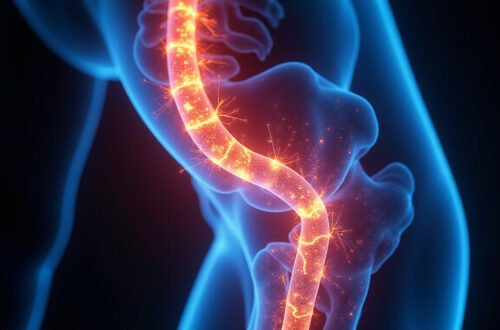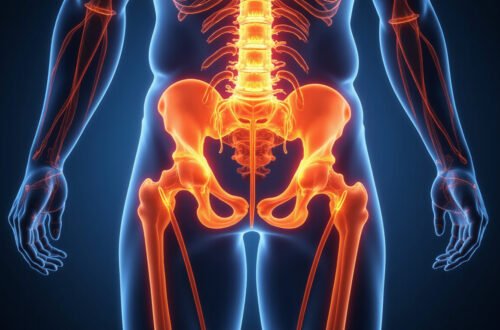Dealing with sciatica pain can significantly impact your daily routine, making even simple activities uncomfortable. Fortunately, incorporating targeted sciatica exercises at home can provide relief and help reduce the intensity of your symptoms. These exercises focus on stretching and strengthening the muscles that support your lower back and hips, key areas involved in sciatica pain.
In this article, we will explore effective sciatica exercises you can do in the comfort of your home. With consistent practice, you can alleviate pain quickly and improve your mobility.
Understanding Sciatica and Its Causes
Sciatica refers to pain that radiates along the sciatic nerve, which extends from your lower back, through your hips and buttocks, and down each leg. This pain is often caused by compression or irritation of one of the five nerve roots that form the sciatic nerve. Herniated discs, spinal stenosis, or muscle spasms can trigger this condition.
Knowing how to perform the right exercises is crucial to avoid aggravating your symptoms. The goal of the exercises is to relieve pressure on the nerve, improve flexibility, and strengthen the supportive muscles around the spine and pelvis.
Benefits of Doing Sciatica Exercises at Home
Implementing sciatica exercises at home offers several advantages:
- Convenience: Exercise at your own pace and schedule without the need to visit a clinic.
- Cost-effective: No expensive equipment or gym memberships are necessary.
- Control: You can customize or stop exercises according to your pain levels.
- Consistency: Regular practice can lead to quicker pain relief and long-term improvements.
Top 5 Sciatica Exercises at Home for Quick Pain Relief
Here are five effective sciatica exercises that you can safely perform at home. Remember to warm up gently before starting and consult your healthcare provider if you have questions or severe pain.
1. Piriformis Stretch
The piriformis muscle lies near the sciatic nerve. When tight or inflamed, it can pinch the nerve and cause pain.
- Sit on the floor with legs extended straight.
- Cross your right leg over the left, placing your right foot flat on the floor near the left knee.
- Gently twist your torso to the right and use your left arm to press your right knee toward your left shoulder.
- Hold for 30 seconds, then switch sides.
2. Knee to Opposite Shoulder Stretch
This stretch relieves tightness in the gluteal and lower back muscles.
- Lie on your back with legs extended.
- Bend your right knee and use your left hand to gently pull the knee toward your left shoulder.
- Hold this for 30 seconds without forcing the stretch.
- Repeat 2-3 times on each side.
3. Cat-Cow Pose
This yoga-inspired movement helps mobilize the spine and reduce stiffness.
- Begin on all fours with shoulders stacked over wrists and hips over knees.
- Arch your back downwards (cow pose), lifting your head and tailbone up.
- Then round your back upwards (cat pose), tucking your chin to your chest and tailbone under.
- Repeat slowly for 10-15 rounds.
4. Pelvic Tilt
Pelvic tilts engage your abdominal muscles and provide lumbar support.
- Lie on your back with knees bent and feet flat on the floor.
- Tighten your abdominal muscles to flatten your lower back against the floor.
- Hold for 5 seconds and then relax.
- Repeat 10-15 times.
5. Hamstring Stretch
Tight hamstrings can contribute to lower back and sciatic nerve pain.
- Sit on the floor with one leg extended and the other bent so the sole of your foot rests near the inner thigh.
- Lean forward gently over the extended leg, keeping your back straight.
- Hold for 30 seconds, then switch legs.
Tips to Maximize the Effectiveness of Your Sciatica Exercises at Home
To ensure your home exercises produce the best results:
- Stay consistent: Aim to perform the exercises daily or at least 4-5 times a week.
- Listen to your body: Avoid sharp or increasing pain during exercises. Slight discomfort is normal but do not push through severe pain.
- Use support if needed: Utilize cushions or yoga blocks to modify poses for comfort and safety.
- Combine with other therapies: Heat or ice packs, proper posture, and physical therapy can complement your exercise routine.
- Stay hydrated: Drinking water helps maintain muscle elasticity and overall health.
Frequently Asked Questions (FAQs)
What are the best sciatica exercises at home for beginners?
Beginner-friendly exercises include gentle stretches like the knee-to-opposite-shoulder stretch, pelvic tilts, and the piriformis stretch. These require minimal movement and can be adapted for comfort.
How long does it take for sciatica exercises at home to relieve pain?
Pain relief timelines vary depending on the severity of sciatica and individual conditions. Many people notice improvement within a few days to a couple of weeks with consistent practice.
Can sciatica exercises at home prevent future flare-ups?
Yes, regular stretching and strengthening exercises help maintain spinal flexibility and muscle balance, which reduces the risk of recurring sciatic nerve irritation.
Expert Insight: The Role of Exercise in Sciatica Management
The American Academy of Orthopaedic Surgeons emphasizes that exercise is a critical part of treating sciatica, as it addresses the underlying mechanical issues causing nerve compression (source). They recommend a program combining flexibility and strength training tailored to the individual’s symptoms.

Conclusion
When you suffer from sciatica, finding relief quickly is paramount to regaining your quality of life. Performing targeted sciatica exercises at home is an accessible, affordable, and effective way to mitigate pain and improve mobility. By incorporating stretches like the piriformis stretch, knee-to-opposite-shoulder stretch, and strengthening movements such as pelvic tilts into your daily routine, you can alleviate discomfort and support your lower back health.
Don’t let sciatica control your life—start these exercises today and take proactive steps toward pain relief and better spinal health. If pain persists, always consult a healthcare professional for tailored advice and treatment options. Embrace movement as the first step on your journey to a pain-free, active lifestyle!






